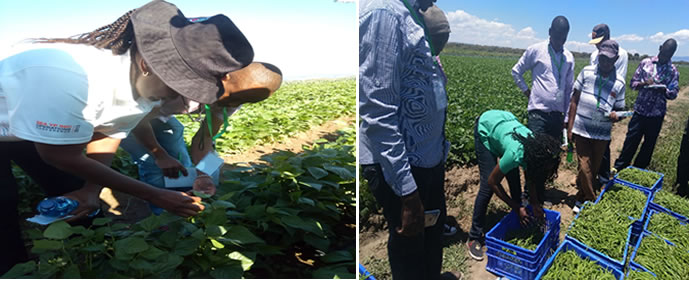The Kenya Plant Health Inspectorate Service (KEPHIS) in collaboration with USAID Feed the Future Project last week conducted a three day training of 50 technical personnel from the horticulture industry on safe use of pesticides to ensure food safety.
The event consisted of theoretical and practical sessions that aimed at educating participants on Quality Management Systems (QMS) that aids in planning, assurance, control and improvement of systems to ensure food safety.
At the official opening, KEPHIS MD, Dr. Esther Kimani urged the stakeholders to produce the best agricultural produce to increase its demand in the international markets. She emphasized that market requirements are becoming more stringent and must be met.
“There are 196 blacklisted molecules in the EU which are 70 fungicides, 64 insecticides, 53 herbicides, 15 fumigants and 11 plant growth regulators that contain acephate, methamidophos, carbofuran, dimethoate, omethoate, chloropyrifos, dimefuron, fenthion, profenofos and carbendazim, said Benard Okonda, an Analytical Chemistry Laboratory analyst.
“Different markets have different standards; we are soon penetrating the US market and its standards will be communicated,”

Trainees being taken through scouting for pests and diseases (left) and sampling for pesticide residue analysis (right). Photo/Kephis.org)
Participants were taken through the new market requirements to ensure compliance as new regulations were put in place since January 2018 due to the False Codling Moth (FCM).
According to Horticultural Crops Development Authority (HCDA), the industry regulator, 17 out of 29 produce rejections at the European Union markets in 2017 were due to the False Codling Moth (FCM).
“The European Union is watching our trends in terms of pest management, while the Australian market requires no live insect on produce exported there,”said Debora Shituvi, a KEPHIS inspector.
Kenya, being a member of the Organization for Economic Cooperation and Development, its fruits and vegetables must meet the minimum requirements such as being sound, intact, use of right labelling to enable traceability, rightly packed and free from harmful organisms to avoid interceptions, stringent measures on arrival to the international market and to ease pest management.
James Woto, from the Analytical Chemistry Laboratory (ACL) emphasized that calibration is important as it ensures correct amount of pesticide is applied uniformly over the targeted area hence, preventing wastage and ensure that there is no residues in crops being sprayed which results to consumer protection. He noted that errors are brought about by worn out pumps or nozzles, improper cleaning methods, mishandling, uncalibrated pesticide spray equipment and lack of supervision and monitoring during spraying.
Linda Maina, also from the ACL took the trainees through the QMS which consists of quality planning, quality assurance, quality control and quality improvement. She noted that during documentation, a hierarchy consisting of manual, policy, procedures, work instructions and records should be noted. “This is important because it helps in improving processes, reducing waste, lowering costs, establishing a process based work approach, engaging staff, determining of customers and their requirements and setting organization’s direction.
In addition, the trainees were taken through the maximum Residue Limits (MRL) setting, testing and decisions on compliance which are based on the CODEX standards. A representative sample is obtained from a lot for analysis. The EU has placed Kenya on the radar as one of the countries with 10 per cent increased Maximum Residual Levels (MRLs), which are the set legal levels of concentration of pesticide residues in or on food.
The trainees were also taken through a practical session in Naivaisha where they learnt how to calibrate spraying equipment and speed used while spraying to ensure uniformity of pesticide applied. They also learnt about scouting for pests and diseases and sampling for pesticide residue analysis.
















Comments powered by CComment